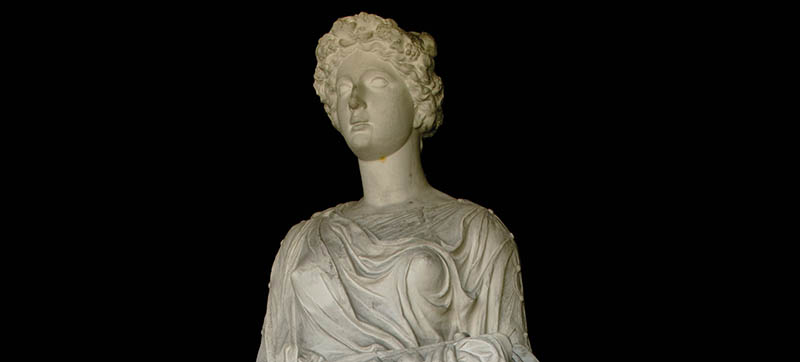PUBBLICO & PRIVATO/Tomaso Montanari
In a country like this, drowning in the rhetoric of the State representing evil and the private sector representing all that’s good, what would happen if a large private museum went onto the market? And if this were the case and the sum of money involved was a feasible figure, let’s say, three and a half million euro? What would be the outcome? Maybe a private individual or a group of said individuals would move in? Or, tragicomically, current rhetoric might be reversed and public assistance would be invoked in aid of a private individual in difficulty?
Hic Rhodus, hic salta: that museum exists and it is on sale for that figure.
That Museum is truly extraordinary: it’s the Ginori Museum, six miles north of Florence. It has been closed for two years on account of the bankruptcy (with several commitments for trial for fraud) of Richard Ginori 1735 spa that used to be its owner. Bankruptcy occurred in 2012 and already by 2013 Ginori had been acquired by Kering, the French multinational organisation founded by François Pinault (the owner, among other things of Christie’s) that also controls Gucci and Pomellato, as well as many other luxury brands. However, Kering did not actually buy the Museum. Why? Because since it was not able to purchase the warehouses of Ginori (which a group of Florentine building developers had soon spotted with the intention of realising an enormous building project) the Group cannot be certain that the Ginori manufactory will stay connected to that particular area whilst the Museum – Deo gratias – is subject to a law that not only forbids its being sold in lots but also prevents it from being moved elsewhere.
Meanwhile, the Museum is suffering and languishing and risking disappearance. Closure does not only mean a lack of visitors. It also means a lack of maintenance. Leaking rain-water has deformed the wooden window frames and threatens the works within. The waxes are covered in dangerous mould, the dampness has swollen their chalky souls! Old books, too, have swollen and become deformed. For the Ginori Museum it is a gradual, but relentless passing away, plain for all to see. It is a cultural tragedy.
The Ginori Museum is one of the world’s oldest industrial museums. When it opened, in 1754, it was in the Galleria della Villa in Doccia (a hamlet near Sesto Fiorentino, north of Florence) in which the Marquis, Carlo Ginori, had decided to exhibit the finest products of his miraculous furnace that had so swiftly become one of Europe’s epicentres of the art of porcelain. Carlo Ginori’s chemical skills along with his son, Lorenzo’s business skills, as well as the opportunity to utilise the boundless artistic and decorative repertoire in Florence soon turned Ginori into a success story. When, in 1893, it was purchased by the Milanese Richard, annual production rose to the giddy heights of eight million pieces. The Museum (with eight thousand pieces and since 1965 housed in a specially-built museum designed by Pier Niccolò Berardi, an architect at Giovanni Michelucci’s Gruppo Toscano) tells this story bit by bit, step by step.
The founder of the manufactory, Carlo Ginori, was able to assemble a unique collection. He gathered an enormous amount of models, waxes and plasters that came from the workshops of the most prestigious names in Italian sculpture, namely Giambologna, Tacca, Soldani Benzi, Foggini and many others. Alongside this unique repertoire of forms and figures, the collection also included all that was created through the centuries for the production of porcelain – around 1200 models in plaster, around 8000 works in ceramics, terracotta, wax and lead and over 7000 plates for decalcomania and chromolithography.
A great museum with works that stretch right up to the 1990’s (among others, the group of works by Giò Ponti is extraordinary). There are thousands of ways that the Museum can be enjoyed – from learning the story behind its most celebrated antique statues to the unleashed fantasies of the Florentine Late Baroque, all still to be unearthed and rediscovered. We can compare the very same shapes and forms realised in different materials (marble, bronze, clay, plaster, wax, porcelain…) and study pure forms and everyday shapes that we can witness in plates, cups and soup-dishes.
And now, what can be done? Just wait until it’s all destroyed, sunk beneath water? Or, instead, might we attempt to save it and answer the appeal made by the highly commendable Association of the Friends of Doccia? Why don’t we try to envisage the setting up of a foundation comprising the Sesto Town Council, the Region of Tuscany, the Ministry of Culture and Art, Kering, an association of Ginori employees and a group of antique dealers? Such a Foundation would be representative of all the main players in this story and would be enough to support a renaissance that would see the Museum’s rooms inhabited by a community of young art historians. This is the time to prove it can be done: the figure requested is not impossible to find. It should, however, be impossible to lose the story and the cultural wealth that are at stake. Hic Rhodus, hic salta.

